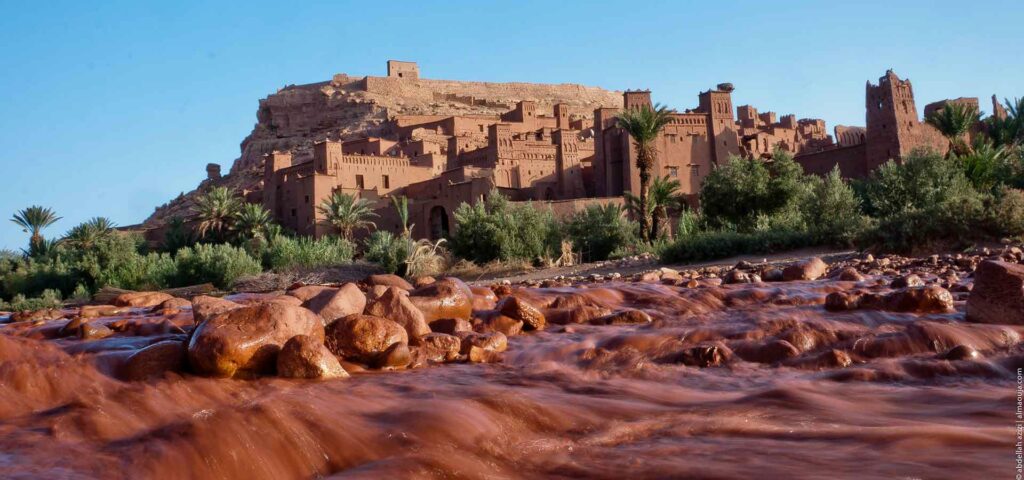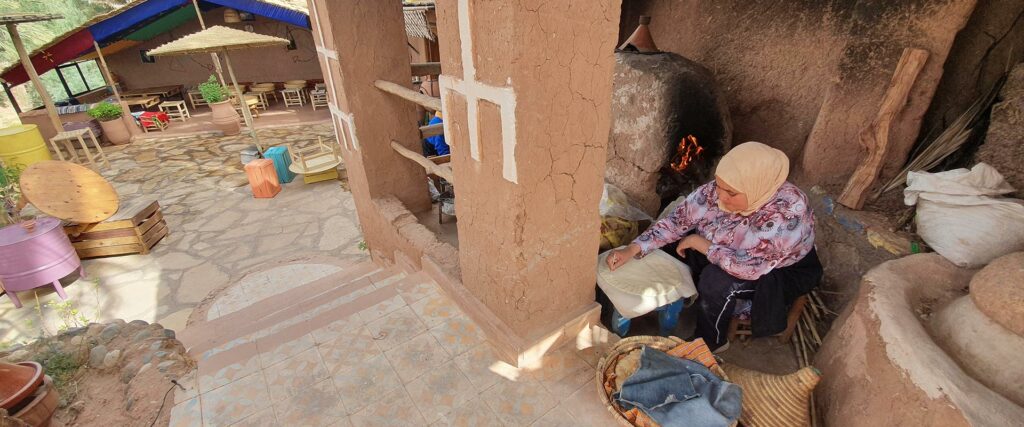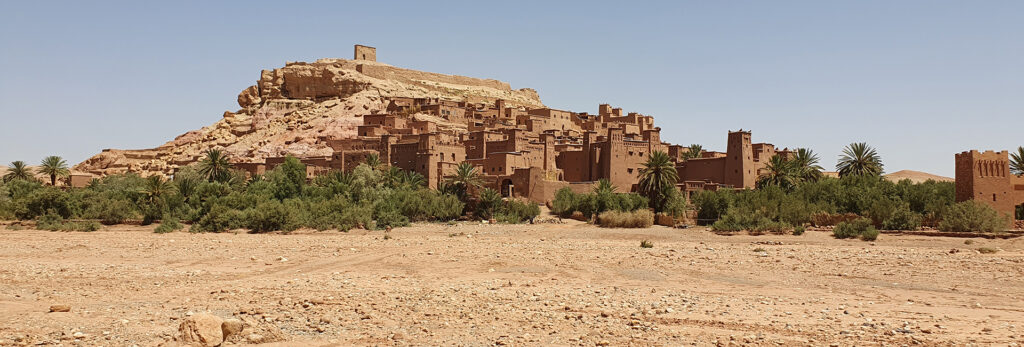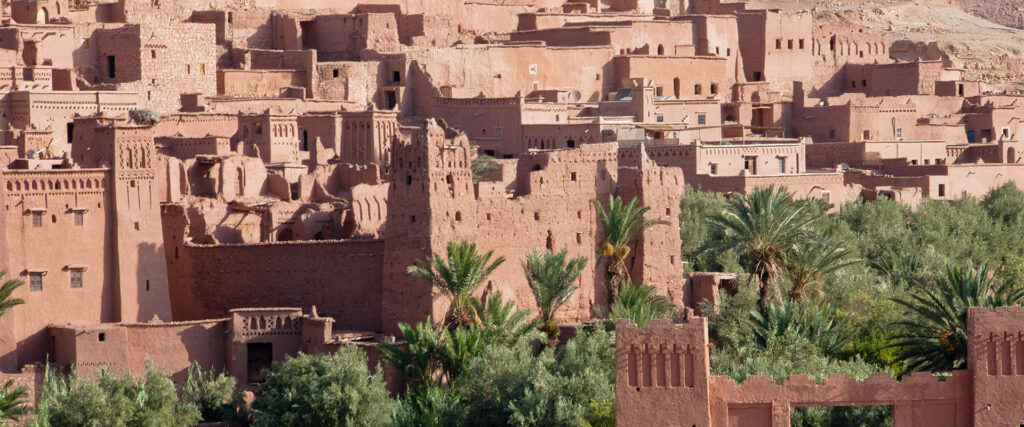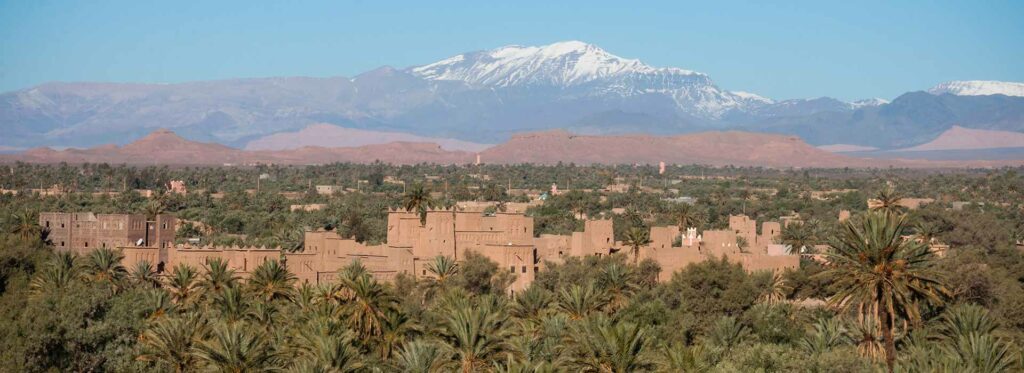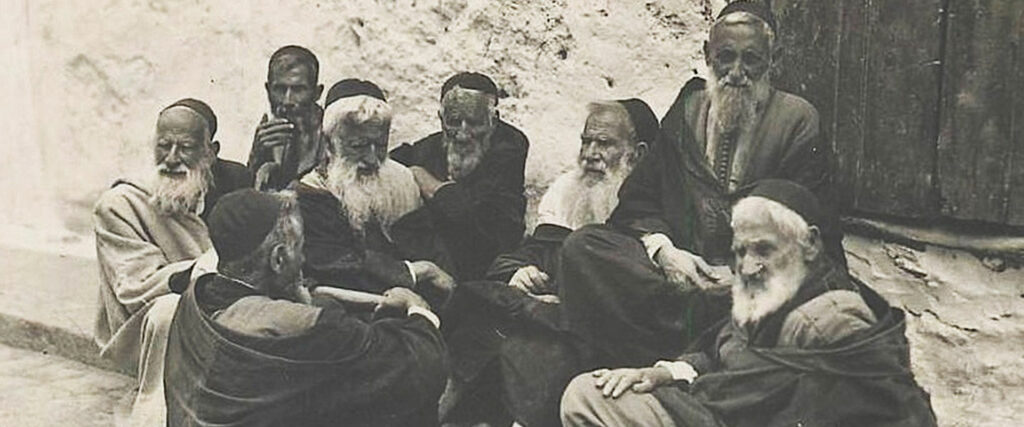Certainly, they had evidently decided to settle along the trail that camel caravans from the other side of the Sahara followed to reach Marrakech. It undoubtedly seemed prudent to them to welcome travelers here for a welcome respite. Oral tradition suggests that pottery trade must have been flourishing, as even today the elders of the ksar refer to the site as Ighrem n’Iqddarn, meaning the village of potters. As often, the choice of names preserves the thread of stories over time, and it is in the winding alleys of the ksar that a well with an eloquent name, Anou n’Tarmouyte, the well of the Christian woman, somewhat illuminates the origins of the place.
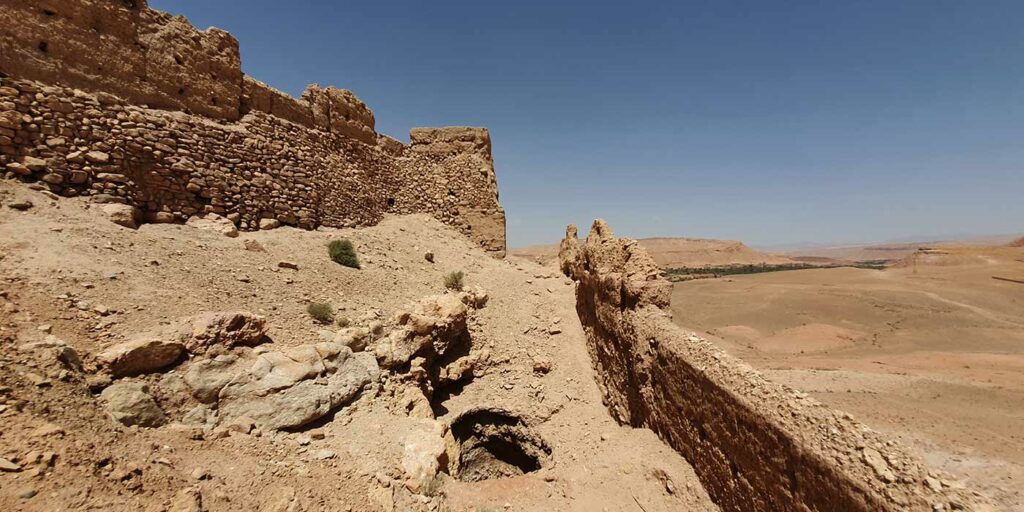
Then one must make a connection with a legend reported by the explorer Charles de Foucauld during his passage in the region in 1883, to begin to sketch in his mind a very distant epoch when the region was under the authority of a Berber king, Christian, named Ouâd. One of his four daughters, Aïssatou, is said to have settled at the foot of the rock while her other sisters, Skoukta, Zelfa, and Doulatou, had settled in villages nearby. It is said that during his reign, games around the fire were particularly popular, and to this day, this custom persists. Further on, another place refers to his presence since the north tower of the ksar is named LBorj n’Tarmouyte, which means the tower of the Christian woman. This would be to recall the place through which Princess Aïssatou is said to have escaped the assault of Muslim armies from Arabia in the 7th century to conquer the lands of Africa to their west.
The echo of her memory will be heard centuries later, as the music of her name will resonate in that of the tribe of Aït Aïssa, reputed to be the originators of the founding of the ksar in the 11th century under the Almoravid dynasty. Here again, a legend tells that a man named Aïssa, who came one day from the desert, stopped at the foot of the rock to found the first village there. For a long time, the ksar was known as Ighrem n’ Aït Aïssa until a new leader, Amghar Ben Haddou, in turn imposed the use of his surname on the entire tribe, which had become a member of the Aït Zineb tribe and the confederation of tribes of Aït Ouaouzguite.
Faced with so many hypotheses, official history holds the 18th century as the first milestone of existence, as the only available written documents date back to this period. But one certainty remains, and the brilliance of legends confirms it: the ksar of Aït Ben Haddou, around its rock, attracted the humble, the powerful, and the wise, leaving forever veiled the reasons for such a strong allure.
Version originale en français : Aït Ben Haddou, de la légende à l’histoire


